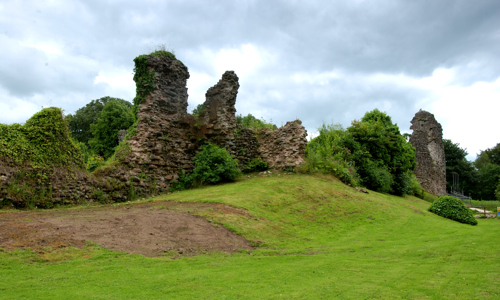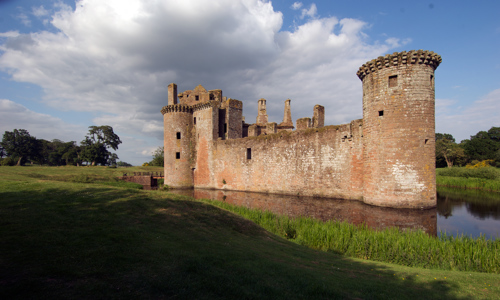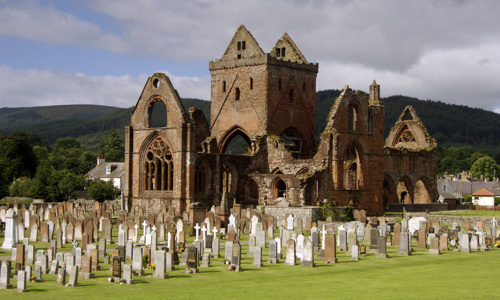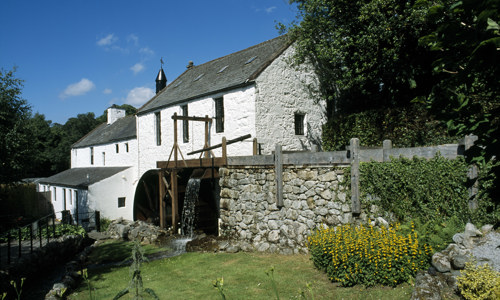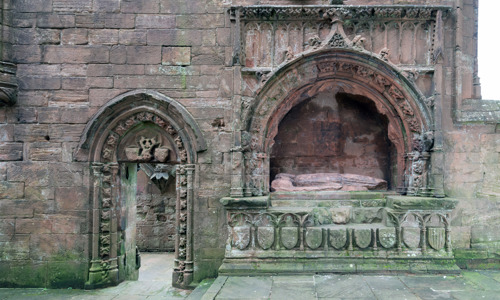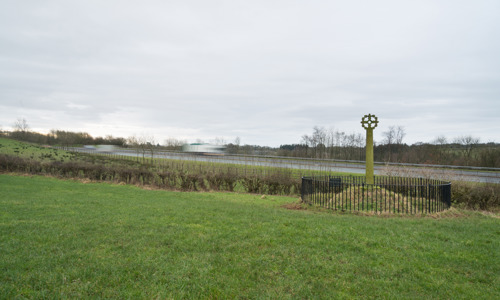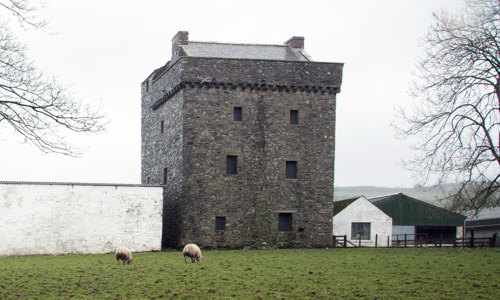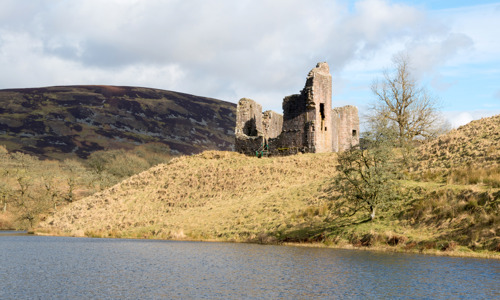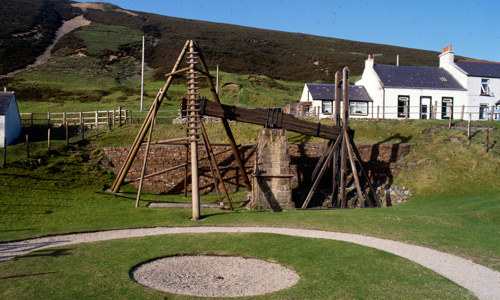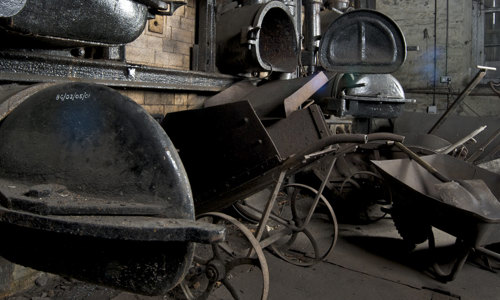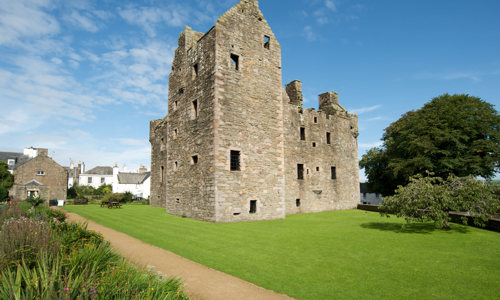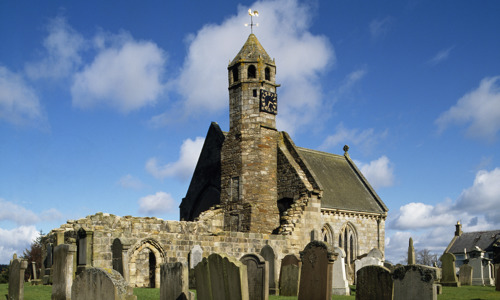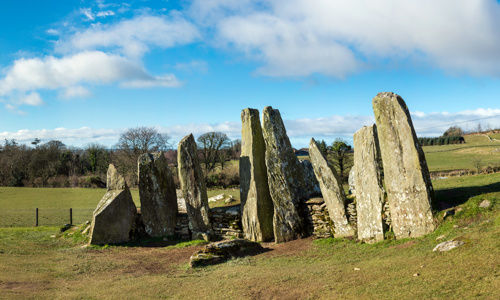History
The Ruthwell Cross was created in the early 700s, a time when the kings of Northumbria extended their rule into south-west Scotland.
The cross may have stood in a church, but more probably it was situated in the open air. It may have been a preaching cross, helping priests to spread the Christian gospel. Literacy was not widespread at the time, so its carvings would have been useful tools for teaching and preaching.
The cross is remarkably similar to the Bewcastle Cross over the English border in Cumbria.
Carvings on the cross
There has been much debate and argument about the Ruthwell cross, and there have been plenty of attempts to explain its biblical iconography, date, original structure and epigraphy.
Two of its faces are carved with scenes from the New Testament. Latin inscriptions describe the panels.
From bottom to top, the south face bears:
- the crucifixion
- the Annunciation of the Virgin Mary
- Jesus healing the man born blind
- Mary Magdalene anointing Jesus’s feet
- industrious Martha and contemplative Mary
- St John the Evangelist – originally on the top of the north face, but reassembled incorrectly in 1823
While on the north face, we can see:
- the flight – or return – of Mary, Joseph and Jesus from Egypt
- St Paul and St Anthony breaking bread, symbolising the spiritual nourishment of monastic life
- Christ glorified
- the Apocalypse Vision
- St Matthew
- an eagle, symbolising Christ’s resurrection and ascension
The two other faces are carved with the common Northumbrian designs of swirling vines and animals eating grapes, symbolising the Eucharist or the Creation.
The vine scroll is surrounded by Anglo Saxon runes, once thought to be Norse. They were deciphered in 1840 and found to be the text of an Old English poem, the Dream of the Rood, which tells the story of the Crucifixion from the cross’s point of view.
One passage reads:
‘I raised the powerful king
The lord of the heavens
I dared not fall down …
They reviled us both together.
I was all stained with blood
Poured from the man’s side.’
Pieces of the puzzle
A Church of Scotland act against ‘idolatrous monuments’ named the Ruthwell Cross in about 1642. The local minister reluctantly destroyed it, but seems to have taken care in doing so – the fragments were either reused as church seating or buried in the graveyard.
In 1771, the two largest fragments were hauled outside the kirk to make way for new pews.
Some of the fragments were re-erected by Rev Dr Henry Duncan in 1802, and the reconstruction was re-arranged in 1823, with a new head carved by a local mason. The cross was returned to the kirk in 1887, in a purpose-built apse, where it still stands today.


